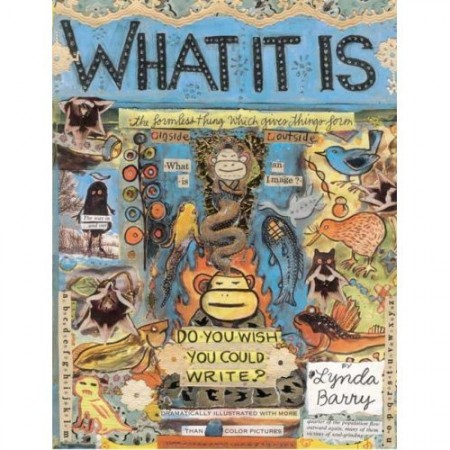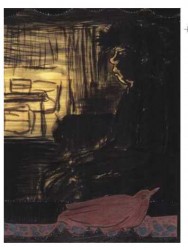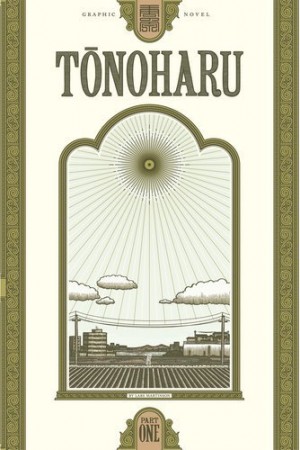From Tonoharu to what it is

Last October I went on the trip to the USA, to be more precise to Oregon. In a bookstore (with a decent graphic novels section) where I spent 2 hours browsing through the rich collection of comic books, I found “Louis – The Clown’s Last Words” by metaphrog. I really enjoyed the storyline and the drawings, so I bought the book and brought it back with me. When a new album was announced on http://www.metaphrog.com called “Louis: Dreams Never Die“, I was of course interested in reading it. The album comes with a cd containing two music tracks by Múm and Hey, and a short animation by metaphrog with soundtrack by hey and múm. The main characters of this story: Louis and FC decide to visit Aunt Alison, but Hamlet and his labyrinthine pathways, as well as the odious Fly Catchers are obstacles our hero will have to overcome. On first glance, you might think “Louis – Dreams Never Die” is a children’s book. Well, it is. The drawings are colorful, shapes are round, reassuring; Louis reminds the reader of a sweet unsuspecting child discovering the world, its wonders and dangers. But “Louis Dreams Never Die” is also for adults, that is adults who have forgotten the recipe for cynicism and for whom ingredients like candor, niceness, dreams still have flavor: life may be a battlefield but one in which you can prevail ! What I like most in this album is the style of the narration: the way the author plays with words, the subtle jokes like: “Something sinister lurked behind the postal exterior”. Now this sums up quite a few issues most of us have with postal services, doesn’t it ? Well, definitely in the UK where I was constantly getting my neighbor’s mail and never saw the postman who could have been a robot with software bugs for that matter. It also suggests the dangers of our modern world: everyday elements like the postman, the media, the autarcic living spaces are disturbing, suffocating, debilitating. Yet the sentence also sums up the main topic of the story: communication. Louis is worried because his aunt isn’t writing anymore. Whereas most people would come up with pessimistic explanations, Louis is understanding to the point of being funny because, let’s face it, his explanations travel in the spheres of high improbability: “Maybe she couldn’t find the right words”, “The agony of the silent page”. The reader knows the truth about the aunt but Louis is happy because he sees no evil, just as he sees no “forbidden” signs.
 The cuteness of menacing creatures who know the language of flowers and of humor: “we could come to some kind of floral arrangement” may be much more effective at criticizing the modern world than many sociological studies. The “real” world is irrelevant for Louis because it should be to us. Pineapples are made piece by piece, with care and attention, each of them a beautifully wrapped masterpiece, very unlike the actual mass-production on pineapple farms. After all, life is a pineapple we design so shouldn’t it be unique ? Louis resists a controlled world without really thinking about it because freedom is in his nature and because ideology isn’t. If “Louis – Dream Never Die” doesn’t lift you up and make you wonder at the same time, I don’t know what could. Enjoy the trip in a world where Orwell had a good day.
The cuteness of menacing creatures who know the language of flowers and of humor: “we could come to some kind of floral arrangement” may be much more effective at criticizing the modern world than many sociological studies. The “real” world is irrelevant for Louis because it should be to us. Pineapples are made piece by piece, with care and attention, each of them a beautifully wrapped masterpiece, very unlike the actual mass-production on pineapple farms. After all, life is a pineapple we design so shouldn’t it be unique ? Louis resists a controlled world without really thinking about it because freedom is in his nature and because ideology isn’t. If “Louis – Dream Never Die” doesn’t lift you up and make you wonder at the same time, I don’t know what could. Enjoy the trip in a world where Orwell had a good day.
Book review: “Tonoharu” by Lars Martinson
!
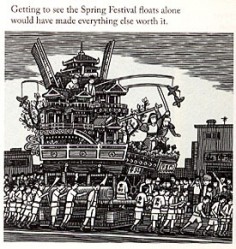 Of course this makes it very hard for an American, like Daniel Wells, used to debating things, to even find a way to make contact, which he nevertheless tries again and again in what you could call a “Bildungsroman”. Other expats are no help either. During the gathering in the Japanese temple, in the heart of local culture, Daniel talks to a few other foreign residents, all displaying a spectacular ignorance and lack of interest in the local way of life: “-What brings you to Japan, Mister Wells? -Um, teaching I guess, H-how about you? -Why, the adorable natives of course! Aren’t they just darling?” The book ends with a scene at the school; Daniel Wells looks out of the window, as if wondering, if he will ever understand the Japanese. To be continued… P.S. The “Saarlouis” sign on the wall of the cafe p.90 adds, but maybe only for me, to the touch of reality. Saarlouis is a small German town barely anybody knows outside of a region called Saarland. It was a favorite destination of mine as a child because my parents lived not far away (they still do).
Of course this makes it very hard for an American, like Daniel Wells, used to debating things, to even find a way to make contact, which he nevertheless tries again and again in what you could call a “Bildungsroman”. Other expats are no help either. During the gathering in the Japanese temple, in the heart of local culture, Daniel talks to a few other foreign residents, all displaying a spectacular ignorance and lack of interest in the local way of life: “-What brings you to Japan, Mister Wells? -Um, teaching I guess, H-how about you? -Why, the adorable natives of course! Aren’t they just darling?” The book ends with a scene at the school; Daniel Wells looks out of the window, as if wondering, if he will ever understand the Japanese. To be continued… P.S. The “Saarlouis” sign on the wall of the cafe p.90 adds, but maybe only for me, to the touch of reality. Saarlouis is a small German town barely anybody knows outside of a region called Saarland. It was a favorite destination of mine as a child because my parents lived not far away (they still do).Nathalie Schon
Book review:
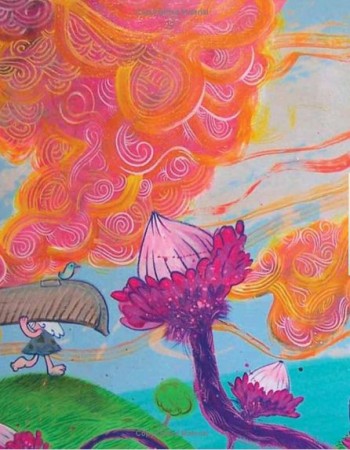
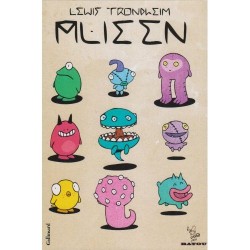
 The reader, the author, heck, everybody has to work on it (no simply reading doesn’t qualify). Or to put it in one catchy sentence I’m going to steal from the rainbow book: “It’s always a bummer getting stuck in a hole that you can’t get out of. Gotta work those pecs”. And no again, Bwana Spoons isn’t talking about renewing your gym membership (in the world of internet invading lol cats you never know who’s going to read this blog). So buy, borrow or get the book as a gift and, hey, maybe buy some colors and send Bambi back into the forest.
The reader, the author, heck, everybody has to work on it (no simply reading doesn’t qualify). Or to put it in one catchy sentence I’m going to steal from the rainbow book: “It’s always a bummer getting stuck in a hole that you can’t get out of. Gotta work those pecs”. And no again, Bwana Spoons isn’t talking about renewing your gym membership (in the world of internet invading lol cats you never know who’s going to read this blog). So buy, borrow or get the book as a gift and, hey, maybe buy some colors and send Bambi back into the forest.
